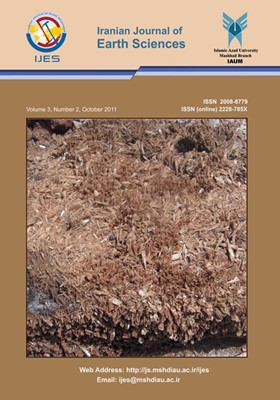-
-
List of Articles
-
Open Access Article
1 - Admixture-elements and their use as geochemical indicators for search of buried pyrite ores in the Greater Caucasus (Azerbaijan)
Novruz A.Novruzov -
Open Access Article
2 - Relationship between River Flow, Rainfall and Groundwater pumpage in Mikkes Basin (Morocco)
K. Belhassan -
Open Access Article
3 - Depositional History and Sequence Stratigraphy of the Tirgan Formation (Barremian – Aptian) in the Zavin section, NE Iran
M. Javanbakht R. Moussavi Harami A. Mahboubi -
Open Access Article
4 - Evaluation of Groundwater Chemistry of a Central Kerala River Basin, India using Multivariate Analysis
Girish Gopinath Resmi T. R. -
Open Access Article
5 - Source Rock evaluation, Modelling, Maturation, and Reservoir characterization of the Block 18 oilfields, Sab’atayn Basin, Yemen
A.S. Alaug D. Leythaeuser B. Bruns A.F. Ahmed -
Open Access Article
6 - Role of Mineralogy and Geochemistry in the Beneficiation of Jajarm Bauxite from North East Iran: Comparison with some other Bauxite Deposits of the World
Habib Mollai -
Open Access Article
7 - Artificial Intelligence for prediction of porosity from Seismic Attributes: Case study in the Persian Gulf
A. Hosseini M. Ziaii A. Kamkar Rouhani A. Roshandel R. Gholami J. Hanachi -
Open Access Article
8 - Geochemical Exploration of the Tareek Darreh Gold Deposit, North of Torbat-e Jaam, East Iran
K. Shabani N. Nezafati M. Momenzadeh I. Rassa
-
The rights to this website are owned by the Raimag Press Management System.
Copyright © 2021-2025







